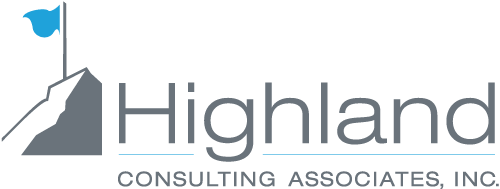Glide Path 2023: Do Headwinds Require a Change in the Plan?

The headwinds (and headlines) of 2022 included this:
- Record inflation,
- Declining equity markets, and
- Sharply higher interest rates.
2022 was a year of volatility and concern over the prospects of a recession in 2023. However, for many defined benefit plans, those headwinds were favorable in the way they affected plan funded status, or the measure of plan assets to meet future obligations. Funded status is a primary gauge of a pension plan’s health. At the end of 2022, that measure for a majority of Fortune 1000 plans was strong and relatively stable despite heightened risk asset and bond market volatilityi. Can we expect that to continue as we move into 2023? Is this the time to review or revise your glide path? Or, perhaps more appropriately for plans without a glide path, is this the time to learn more about them?
What Are Glide Paths and What Gave Rise to Them?
Simply put, a pension’s glide path is an asset allocation framework aimed at reducing funded status volatility and locking in gains as funded status improves. Better funded plans can elect to de-risk their portfolio by shifting the asset allocation along a predetermined glide path (i.e., reducing equity risk in favor of hedging assets) or reducing the size of the plan through various risk transfer activities (i.e., lump sum window, partial or full termination). These topics will be described in future messages. And please recognize that this and future writings will pertain primarily to closed or frozen plans, unless otherwise noted. For open plans still accruing benefits, there are additional considerations outside of the focus of these writings.
The creation and use of glide paths began with the Pension Protection Act of 2006, and became more widespread due, in large part, to the Global Financial Crisis (GFC) of 2007-2008. In 2007 as the GFC began, the combined funded status of the nation’s largest private pension plans was 107%. By the end of 2008, it had dropped approximately 30% to 77%.i[i] That year, the S&P 500 index declined by more than 38%. These events, together with new funding rules as part of the 2006 Pension Protection Act, and the general maturing of the U.S. pension system, led to the adoption of de-risking glide paths which have become commonplace among corporate pension sponsors.
Where are We Now: Do Glide Paths Need a Course Correction?
In the years since the GFC, the funded status among the largest pension plans has improved. And, for the years 2021 and 2022, it has remained steady at 95%.i[ii] This is a recent high-water mark not seen since the 107% funded status of 2007. And while your plan may not be counted among these Fortune 1000 plans, that funded status is typical of what we’ve witnessed among our pension clients. For many of these well-funded plans at a high-water mark, a glide path would signal actions that should be taken.
However, not every plan has an established glide path and not every plan with a glide path has been reviewed in light of last year’s volatility as well as future expectations.. This is an opportune time to Revisit, Review and Revise:
- Revisit the merits of a glide path and consider implementing one if your plan hasn’t already.
- Review your glide path if you have one. Economic conditions change. Corporate finances and cash flows change too. Is your glide path (which may have been established years ago) accounting for those changes?
- Revise your glide path if it isn’t aligned to the current economic environment and forecasts, and your corporate goals and objectives.
We at Highland can help you evaluate your pension plan and advise adjustments to the possible headwinds of 2023 and beyond to help smooth your plan’s arrival at a fully funded position.
Please contact Mike Paolucci at Highland, 440.808.1500
[i] https://www.nasdaq.com/press-release/funded-status-of-largest-u.s.-corporate-pension-plans-held-steady-in-2022-2023-01-03
ii Ibid
Highland Consulting Associates, Inc. was founded in 1993 with the conviction that companies and individuals could be better served with integrity, impartiality, and stewardship. Today, Highland is 100% owned by a team of owner-associates galvanized around this promise: As your Investor Advocates®, we are Client First. Every Opportunity. Every Interaction.
Highland Consulting Associates, Inc. is a registered investment adviser. Information presented is for educational purposes only and does not intend to make an offer of solicitation for the sale or purchase of specific securities, investments, or investment strategies. Investments involve risk and unless otherwise stated, are not guaranteed. Be sure to first consult with a qualified financial adviser and/or tax professional before implementing any strategy discussed herein. Past performance is not indicative of future performance.



